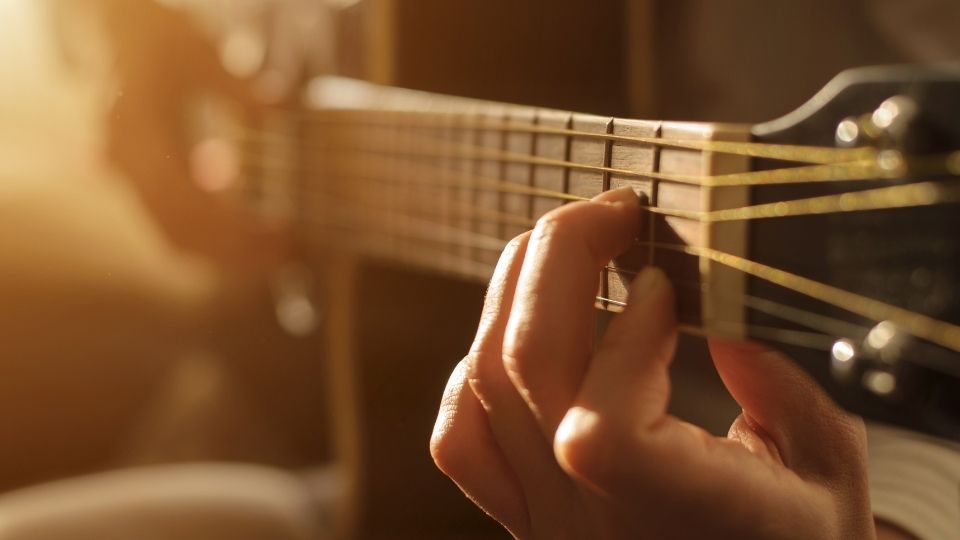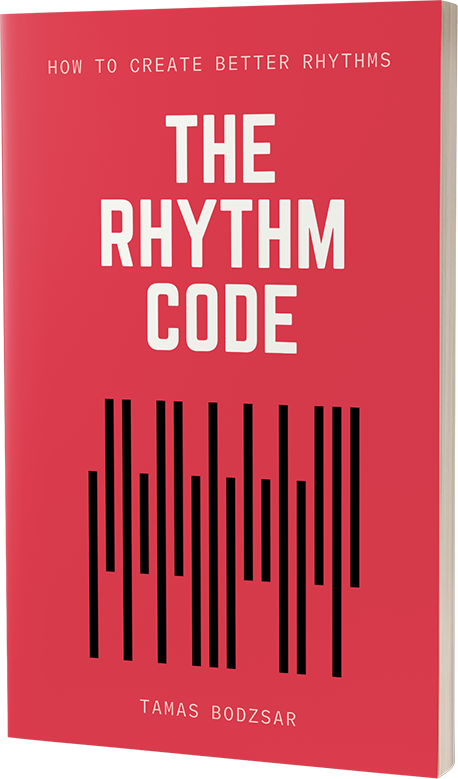
It’s probably obvious to everyone that if we want to write a slow song, we have to choose a slow tempo. But are there any more differences between faster songs and slower songs? Actually, there are some distinctive differences between slow songs and fast songs, but I will also write about what are the tools that both slow and fast songs have. So if you want to learn how to write slow songs, this article is for you.
Low energy levels
The very first difference is that slow songs usually have very low energy levels, especially in the verses. What does it mean exactly? There are a few different tools you can use to make the energy level low. Using a slower tempo already sets the song at a lower energy level. But the other thing is, slow songs use much fewer instruments. Most of the time you can only hear the vocal and the chords (e.g. guitar), maybe some drums and bass.
Secondly, it’s not just the number of instruments, but it’s also the instruments play only a very few notes. In faster songs, they usually play more notes, the bass is busier, the drums play more rhythmic stuff. So even if there is bass and drums, there is very minimalistic playing going on.
Thirdly, you can also set the energy level lower with the vocal. The melody usually starts low, especially in the verse. And the vocalist doesn’t sing with full effort but applies a softer singing technique. However, this is mostly true for only the verse, and many of the slow songs have a bigger chorus where there is more energy, and the singer is singing in a less soft voice and at a higher range.
Acoustic instruments
Today there are not many songs that use acoustic instruments, especially if we are talking about commercial pop songs. But when it comes to slow songs, they still use acoustic instruments most of the time. This is probably because slower songs tend to get emotional (more about that later), and it’s probably hard to get in the mood using synth sounds. Traditionally, all songs used to have only acoustic instruments in them, and people get emotional from things that bring nostalgia. For example, this is the reason Christmas songs usually use acoustic instruments and jazzy chords.
So they still use acoustic instruments in today’s slow songs, in fact, as I mentioned earlier, most of the time, the arrangement is only a vocal with an acoustic instrument. Most of the time, this instrument is an acoustic guitar, but many times it’s an acoustic piano. Sometimes an electric guitar, which I still consider an acoustic instrument since it’s not a synth sound.
The melody is more important
The melody is one of the most important parts of any song. It is what most people remember from it. But to be honest, if you write a faster song with a great arrangement, great rhythm, nice bass groove, the melody becomes less important. If you write danceable songs, people will care less about the melody. But when you write a slow song, and there’s not much happening in the instruments and there is no groove, the melody becomes even more important.
In a faster song, the melody can be more static with less movement, fewer leaps in them. In fact, you shouldn’t write a melody with too many movements and leaps if it’s a faster song because it becomes harder to sing. But when it comes to slow songs, you can write a melody that is more melodic, which means, it can have more movement, with higher leaps.
Get emotional
Let’s talk about the lyrics. When it comes to slow songs, you can’t write about “partying hard” or being at the top of the world. (Although the song “Top of the World” by the Carpenters is a relatively slow song, but that song creeps the hell out of me, to be honest. It’s a typical song they use in horror movies.) And although the topic can have a positive vibe, it also can’t be a too-happy song. If you write a slow song, then it’s time to get emotional. The topic of the lyrics can be about being nostalgic, it can be about memories (good or bad), or it can be about how you feel after a breakup. Let’s take a look at some examples.
“Everything Has Changed” by Taylor Swift – The topic of this song is about the past, and how two people got to know each other and probably fall in love. Nostalgia and romance.
“Set Fire To The Rain” by Adele – This song is also about the past and how she fall in love. But the pre-chorus tell us that it ended, and it probably ended badly. So again, nostalgia, romance, and how she feels after a breakup. “Let it burn”.
“Love Yourself” by Justin Bieber – Although many people hate this guy for whatever reason, this song is really good (and actually written by Ed Sheeran.) This is also about “how I feel after a breakup”. But he also goes into more details with more specifics, which makes a song really unique.
SIMILARITIES
Chord progression
Writing slow songs is actually not that different from writing faster songs. For example, you can literally use the very same chord progressions as you use in faster songs. The chord progression alone doesn’t make a difference. So anything you have already learned about making chord progressions is completely useable in slow songs too.
Rhythm
While it’s true that slow songs have much fewer notes, the instruments are less busier, but you can use the very same rhythm system as you would use in fast songs. I discovered that there is a hidden rhythm system in all successful songs, and I was really surprised when I found out that successful songwriters use this system not just in danceable songs, but in slow songs too. I call this system the Rhythm Code™, and you can learn about it in the Songwriting Essentials course.
Contrast
There is a very important aspect of any successful song, regardless of whether if it’s a fast or a slow song, and it is contrast. We always need to make a contrast between the different parts of the song – the verse, the pre-chorus, the chorus, etc. If there is no contrast, the song will be flat and boring, and it won’t affect the listener. There are many ways we can make a contrast, and I already wrote about these in the blog.
Repetition
Using repetition is very crucial in popular genres. People generally prefer songs with repetition. After analyzing more than 2000 successful songs, I realized that there are many different kinds of repetitions in these songs, and I collected all of these in the online course. With these songwriting tools, you can make your song unique and memorable.
The Secret Pattern Behind Successful Songs
Get the eBook for $7

